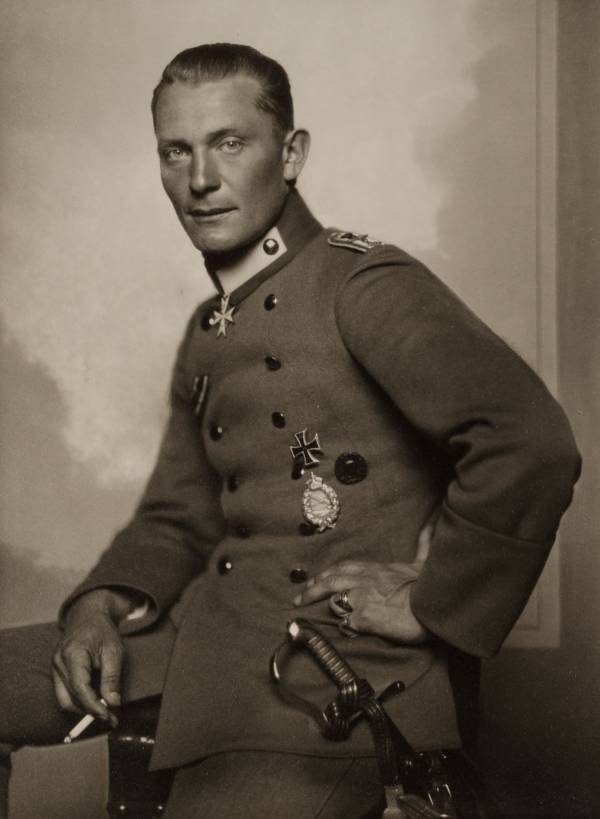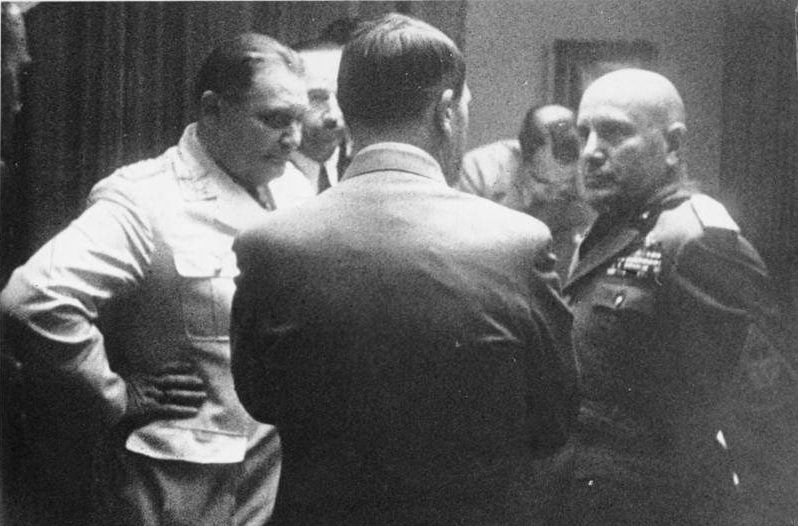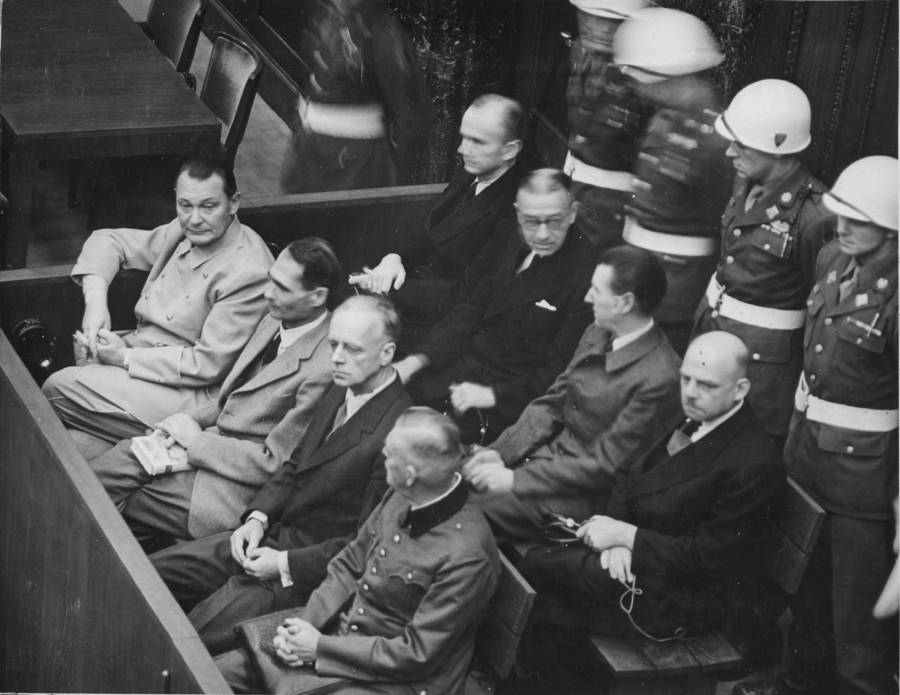Hermann Göring was a flying ace, creator of the Gestapo, and one-time president of the Reichstag — he was also overweight and into drugs.
Hermann Göring was the second-most powerful man in the Third Reich. As Adolf Hitler’s ruthless right-hand man, Göring was instrumental in the Führer’s rise to power. He helped Hitler to secure the Chancellorship of Germany in 1933 and he created the infamous Gestapo — the Nazi secret police that not only suppressed any opposition to Nazism in Germany but also facilitated the Holocaust by helping to round up Jewish people.

TwitterHermann Göring was often referred to as Hitler’s right-hand man.
Hitler even granted Göring the special title of Reichsmarschall – the leader of all of Germany’s armed forces – and designated him as his successor. Despite his exacting and ruthless rule, Göring had an erratic inner life as a morphine addict.
This is the strange history of Hermann Göring, one of the most dangerous men of World War II.
Hermann Göring, The Rebel And The Ace
Hermann Göring was born on Jan. 12, 1893 into an aristocratic Bavarian family and spent his childhood in a variety of fairytale-esque castles. He was described as a “rebellious” boy whose antics eventually got him sent off to military school.
The young Göring thrived in the military atmosphere and ended up serving with distinction during World War I as a decorated ace pilot. He even became somewhat of a celebrity in Germany thanks to his military success. But Göring was destined to have a much bigger impact on history. That impact would be realized when he first met the future Nazi leader, Adolf Hitler.

Wikimedia CommonsA young Hermann Göring in 1907.
Göring was first introduced to Hitler in 1922 when he attended a rally protesting the Versailles Treaty which ended World War I. Like many Germans — and a proud veteran — Göring resented the harsh terms imposed on Germany by the Treaty. He resonated with Hitler’s ideas and found a sort of Messiah in the future Führer.
Having a history as a military officer, Hitler gave Göring command of his growing paramilitary group of thugs, the Sturmabteilung or Storm Troopers. Meanwhile, he began a relationship with a baroness who was estranged from her husband and already had an eight-year-old son. They married in 1923.
That same year when Hitler first attempted to seize power in the 1923 Beer Hall Putsch, Göring was by his side. After the Putsch failed and he took a bullet to his leg in the process, the former flying ace escaped prison by fleeing to Austria.
It was during this time that Göring first came in contact with morphine, which his doctors gave him to ease the pain of his wound. Göring soon became addicted to the drug. In fact, his morphine addiction was so severe that he had to be institutionalized at a mental hospital in Sweden not once but twice in 1925 and 1926.
Despite this, Göring triumphantly returned to Germany in 1927. Thanks to his loyalty to Hitler, he quickly rose to the Nazi Party’s upper ranks.
Göring spent the next five years working tirelessly to promote Hitler and Nazism. He contacted army officers, business leaders, and other powerful, conservative figures to build their support for the Nazis. His efforts were instrumental to the Nazi Party winning the most seats during the 1932 election, and Göring managed to take the presidency of the Reichstag.
Next, Göring used his powerful position to secure Hitler the title of Chancellor — the de-facto leader of Germany. It was then that Hitler was able to take power and orchestrate the greatest period of suffering and destruction in human history.

Wikimedia CommonsYoung Hermann Göring during the First World War. Circa 1917.
Göring’s Life In The Third Reich
With Hitler named Chancellor, Hermann Göring went on a meteoric rise in political power. He was appointed Prussian Minister of the Interior, Commander-in-Chief of the Prussian Police, and the Commander in chief of the Luftwaffe – the feared German air force.
From here, one of his first key acts was to create the Gestapo, the Nazi Secret Police that suppressed any opposition to the Nazis in Germany. This brutal organization would also go on to play a central role in the Holocaust by helping to round up Jews throughout Europe. By the outbreak of World War II in 1939, Hitler had even named Göring as his successor.
Göring’s rise through the ranks of the Nazi party was accompanied by his ever-expanding waistline. His ongoing morphine addiction made him prone to have severe mood swings and may have contributed to the weight gain that transformed the former dashing war hero into the portly figure that was an easy target for mockery.
His indulgence went beyond food and drugs. Göring lived lavishly, setting himself up in a palace in Berlin he named for his first wife. His natural flair for flamboyance and pomp led to him to change uniforms at least five times a day, occasionally donning a medieval hunting uniform or even, as one visitor reported, a full toga and sandals.
He held feasts in his mansion and he boasted the priceless artworks stolen from persecuted Jews he hung throughout his opulent halls.
Although Göring was often mocked as a rotund buffoon, in reality, he was as sinister and dangerous as a man can get. He played a key role in the bloody political purge during the “Night of the Long Knives” when he ensured that his rival within the Party, Ernst Röhm, was executed.
He also declared that there would be a “final reckoning with the Jews” in 1938 and consequently, in 1941, authorized Reinhard Heydrich to find “a general solution of the Jewish question.” That “solution” which Heydrich’s underlings devised at the infamous Wannsee Conference was none other than the Holocaust.

Wikimedia CommonsA French political cartoon mocks Aryans and describes them as “blonde like Hitler, slim like Göring, and tall like Goebbels.”
Family, Failure, And Loss Of Favor
Oddly enough, Göring’s high rank in the Nazi party also helped to save some Jewish lives. Hermann’s younger brother, Albert, was a fervent anti-Nazi who had been working to procure exit visas and passports for his Jewish friends since he first saw the warning signs in the 1930s.
Taking advantage of his brother’s position and playing on his fraternal affections, Albert “regularly went to his brother’s Berlin office to curry favor on behalf of a Jewish friend or political prisoner.”
Despite his growing Gestapo file, Albert remained safe under his brother’s protection until 1944 when, as he recalled, “my brother told me then that it was the last time that he could help me,” and sent him on the run

Wikimedia CommonsHermann Göring with Hitler and Mussolini in 1938.
Göring’s celebrity came to an abrupt halt in 1940. As head of the Luftwaffe, Göring was responsible for the great air offensive against the one enemy that still stood against Germany in Europe: Britain. However, when the Royal Air Force managed to beat back the Germans against all odds, Göring bore the brunt of the blame.
Things only got worse for the morphine-addicted man as the fortunes of Germany continued to be reversed in the next five years of the war. By 1943, the Luftwaffe was failing in its mission of breaking the Soviet Union and protecting Germany against the Allies. Göring had also been overtaken in influence by Hitler’s other lieutenants.
As Göring fell from the Führer’s favor, he became more heavily addicted to drugs. Incidentally, as the war went on, Hitler himself would also become more dependent on drugs. His mental and physical health continued to deteriorate, and then, in 1945, he disappointed the Führer for one last time.

Wikimedia CommonsA slimmed-down Göring during the Nuremberg Trials in 1945.
The Nuremberg Trials & Suicide
In 1945, Hitler announced that he would stay in his Berlin bunker until the war ended. The delusional Göring assumed that his longtime mentor was finally passing leadership on to him. When Göring demanded to be selected as Germany’s new leader, the Nazi Party responded by taking away all his posts and arresting him.
Not long after, on May 9, 1945, he was captured by Allied forces.
Göring was subsequently forced to detox from morphine and face justice for his crimes. By the time he took the stand during the military tribunals known as the Nuremberg Trials, he had slimmed down and seemed to regain some of his old flair as he even brought the court to laughter several times.
He was nonetheless found guilty of conspiracy to wage war, crimes against peace, war crimes, and crimes against humanity, and was sentenced to death. His only solace was that he managed to escape hanging by committing suicide on October 15, 1946, with a cyanide capsule he had smuggled into his cell. He was two hours away from an execution meant to bring him to justice.
After learning about Hermann Göring, read about Hitler’s own drug problems. Then, take a look at the story of Hans-Joachim Marseille, the German anti-Nazi and flying ace.





